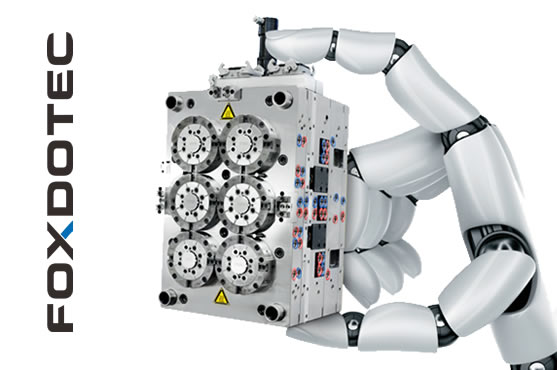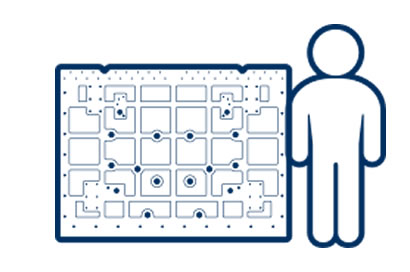Compression Mold Engineering
Pressing Forward, Molding Quality. Experience unparalleled durability and efficiency with our Compression Molds, tailored for high-volume manufacturing.
Compression Mold
What is Compression Mold?
A compression mold is a tool used in the manufacturing process of compression molding. It consists of two or more mold halves that are closed under pressure to shape materials such as plastics, rubber, and composites. Compression molds are typically made of metal and can withstand the high pressures and temperatures required for the molding process. They are used to produce a wide range of products with precise dimensions and surface finishes, including automotive parts, electrical components, and consumer goods.
Precision Injection Mold


What is Compression Mold Process?
Compression Mold Process
The compression molding process involves the following steps:
- Material Preparation: The material, typically in the form of pellets, powders, or preforms, is prepared and placed into the mold cavity.
- Mold Closure: The two halves of the mold are closed under high pressure, often using a hydraulic press, to compress the material into the desired shape.
- Heating: Heat and pressure are applied to the mold to soften the material and facilitate flow into all areas of the mold cavity. The temperature and pressure levels are carefully controlled based on the material being molded.
- Cooling: Once the material has taken the shape of the mold cavity, the mold is cooled to solidify the part. Cooling may occur naturally or be accelerated using cooling channels within the mold.
- Part Ejection: After the part has sufficiently cooled and solidified, the mold is opened, and the finished part is ejected from the mold cavity. Ejection pins or mechanisms may be used to facilitate part removal.
The compression molding process is commonly used to manufacture a wide range of products, including automotive components, electrical insulators, appliance parts, and consumer goods.

CNC Machining
CNC machining is a computer-controlled manufacturing process that utilizes pre-programmed software to dictate the movement of machinery and tools. This technology enables the precise cutting, drilling, and shaping of materials such as metal, plastic, and wood to create intricate components with high accuracy and consistency.
Read More
Precision Grinding
Precision grinding is a manufacturing process that involves the removal of material using abrasives to achieve extremely tight tolerances and surface finishes. used to produce components with intricate shapes, precise dimensions, and smooth surfaces. Precision grinding techniques include cylindrical grinding, surface grinding, and internal grinding.
Read More
Electrical Discharge Machining
Electrical Discharge Machining (EDM) is a non-traditional machining process that utilizes electrical discharges to erode material from a workpiece. It is particularly useful for machining complex shapes and hardened materials that are difficult to machine with conventional methods. EDM can achieve high precision and surface quality.
Read MorePrecision machining and manufacturing involve the use of advanced techniques and equipment to produce highly accurate and intricate components with tight tolerances. It requires expertise in machining processes, material properties, and quality control methods to ensure the production of high-quality parts for various industries.
Key Aspects of Understanding Injection Molds
- Design Principles: Understand the principles of injection mold design, including considerations for part geometry, material flow, cooling, and ejection.
- Materials and Construction: Explore the materials commonly used in injection mold construction, such as tool steel, aluminum, and beryllium copper.
- Manufacturing Techniques: Gain insights into the manufacturing processes used to produce injection molds, including machining, EDM, and CNC milling.
- Mold Maintenance and Repair: Learn about the importance of mold maintenance and preventive maintenance schedules to ensure the longevity and performance of injection molds.
- Tooling Standards and Regulations: Familiarize yourself with industry standards and regulations related to injection mold design and manufacturing.
- Advanced Technologies: Stay informed about advancements in injection mold technology, such as rapid prototyping, additive manufacturing (3D printing), and simulation software.
- Cost Considerations: Gain insights into the cost factors associated with injection mold production and learn about strategies for cost optimization.
- Case Studies and Best Practices: Study real-world examples of successful injection mold projects across various industries.
Key Aspects of Understanding Precision Machining
- Processes and Techniques: Explore the various precision machining processes and techniques, including turning, milling, drilling, grinding, electrical discharge machining (EDM), and others.
- Materials: Learn about the different types of materials commonly machined using precision techniques, such as metals (e.g., aluminum, steel, titanium), plastics, ceramics, and composites.
- Tooling and Equipment: Familiarize yourself with the cutting tools, machine tools, and equipment used in precision machining.
- Tolerances and Metrology: Gain insights into tolerance requirements and metrology techniques used to measure and verify part dimensions and surface characteristics.
- Design for Manufacturing (DFM): Explore principles of design for manufacturability (DFM) and how they apply to precision machining.
- Quality Assurance: Understand quality control measures and inspection techniques used in precision machining.
- Applications and Industries: Explore the diverse applications of precision machining across industries such as aerospace, automotive, medical, electronics, and tooling.
- Advanced Technologies: Stay informed about advancements in precision machining technology, including automation, robotics, additive manufacturing (3D printing), and advanced materials.
Precision machining and mold technical documents
Other Downloads
- Technical Parameter 3.9 MB
- Technical Drawing 1.8 MB
